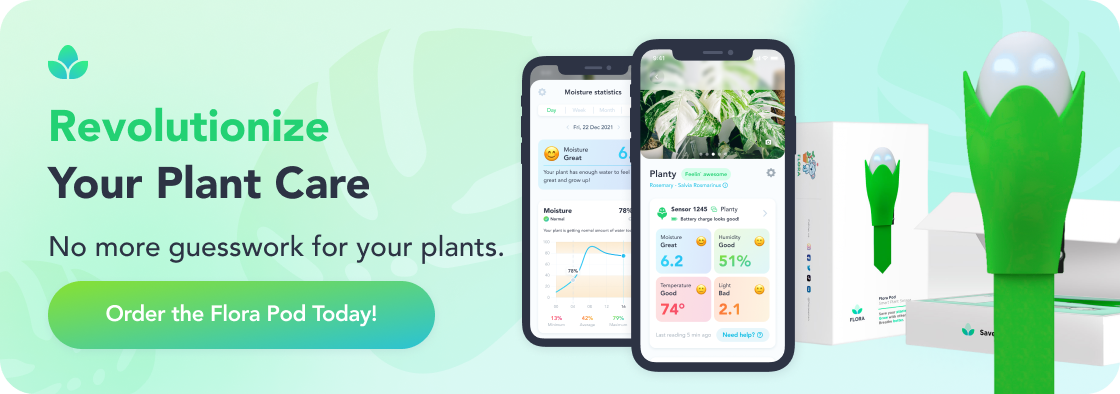How to Protect Your Winter Jasmine Plant in Cold Seasons
Winter jasmine plants add vibrant color to otherwise bare landscapes with their cheerful yellow blooms. While hardy, winter jasmine (Jasminum nudiflorum) still benefits from specific protective measures during cold seasons. With these easy-to-follow steps, you can ensure your winter jasmine plant thrives throughout the chilly months and blooms beautifully in the spring.
Understanding Winter Jasmine’s Cold Tolerance
Winter jasmine is known for its cold resilience, tolerating USDA hardiness zones 6 to 9. This means that in regions with mild winters, the plant can withstand outdoor conditions with minimal protection. However, in colder climates where temperatures drop below freezing regularly, extra care is essential. For optimal protection, especially in zones on the lower end of its tolerance, consider using insulating techniques to protect both the roots and foliage from frost damage.
If your region regularly experiences extreme winter temperatures below 10°F (-12°C), you may want to treat winter jasmine as an indoor plant during the coldest months, moving it indoors to avoid potential winter damage.
Protecting Winter Jasmine Outdoors
Outdoor winterizing is crucial to keep winter jasmine safe in areas with frost or snow. Here are some key methods for protecting the plant’s roots and structure from harsh weather:
Add a Mulch Layer
Apply a 2-4 inch layer of mulch around the base of your winter jasmine to insulate the roots from freezing temperatures. Mulch options include straw, shredded leaves, or wood chips. Spread the mulch evenly, taking care not to pile it directly against the stem, which could encourage rot.Use Frost Cloths or Tree Wraps
For extremely cold nights, consider covering your jasmine with frost cloths. These fabrics allow sunlight to reach the plant while protecting it from frost. In very windy or snowy conditions, a tree wrap may offer more stability and insulation. Make sure the cover is secured, but avoid wrapping it too tightly around the plant, as this can restrict airflow.Water Before Frost Arrives
Watering your winter jasmine thoroughly before the first frost can help it better withstand cold temperatures, as moist soil retains heat longer than dry soil. However, avoid overwatering, as standing water can freeze and damage the roots.
How To Protect Jasmine Plant In Winter
Jasmine plants are prized for their fragrant blossoms and lush foliage, but when winter comes, they can become vulnerable to cold temperatures. Protecting your jasmine plant ensures it stays healthy and blooms beautifully when warmer weather returns. Here are essential tips to help your jasmine thrive through winter.
1. Bring Potted Jasmine Indoors
If your jasmine is grown in a container, the easiest way to protect it is by bringing it indoors. Place it in a room with bright indirect light, like near a south-facing window. Make sure the indoor temperature stays above 50°F (10°C) to prevent stress.
Keep away from heating vents: Heating systems can dry out the air and the plant’s leaves.
Monitor for pests: When you move the plant indoors, inspect it for any insects or fungal issues to prevent spreading.
2. Mulch Around Ground-Planted Jasmine
For jasmine planted directly in your garden, mulching offers protection from the cold. Organic mulch like straw, leaves, or bark insulates the roots and prevents freezing. Apply a 2-3 inch layer of mulch around the plant’s base.
Avoid piling mulch against the stem: Too much moisture around the base can cause rot.
Use breathable material: Organic mulches allow air and moisture to pass through while maintaining warmth.
3. Wrap with Frost Protection Cloths
If outdoor temperatures drop below freezing, wrap your jasmine plant with frost cloth or burlap. This barrier helps maintain warmth and shields the plant from frost damage.
Cover in the evening: Put the frost cloth on at night and remove it in the morning when temperatures rise.
Avoid plastic covers: Plastic can trap moisture, increasing the risk of fungal diseases.
4. Adjust Watering Routine
Jasmine plants require less water in winter since growth slows down. Overwatering can lead to root rot, especially in cooler weather. Check the top inch of soil to ensure it’s dry before watering.
Water in the morning: This gives the soil time to absorb water and prevents dampness overnight.
Reduce fertilizer use: Jasmine plants don’t need fertilizer during dormancy.
5. Use Grow Lights for Indoor Jasmine
If your indoor environment doesn’t get enough natural light, supplement with grow lights. Jasmine plants need around 6-8 hours of light daily, even during winter.
Position lights 12-18 inches from the plant: Too close can cause leaf burn.
Use full-spectrum LED grow lights: These mimic natural sunlight and promote healthy growth.
6. Prune in Late Winter
Winter is an excellent time to prune jasmine to encourage new growth. Remove any dead, damaged, or diseased branches to shape the plant and promote airflow.
Sterilize pruning tools: This prevents the spread of disease.
Focus on leggy growth: Trimming these areas will direct the plant’s energy toward healthy new growth in the spring.
7. Monitor Temperature Fluctuations
If your region experiences fluctuating temperatures, be prepared to protect your outdoor jasmine plant from sudden frost. Keep an eye on the weather forecast and have frost cloths and mulch ready for use.
These strategies will help your jasmine plant stay healthy and vibrant throughout the colder months. With the right care, it will reward you with lush foliage and fragrant blooms once the warmer season returns.
Bringing Jasmine Indoors for the Winter
In regions with harsher winters, moving your winter jasmine plant indoors can be the safest way to protect it. Here’s how to transition your plant effectively:
Prepare for the Move: Before bringing your jasmine inside, inspect it carefully for pests, such as aphids or mealybugs, to prevent infestations indoors. Treat any pests with an insecticidal soap, if necessary, and rinse the plant thoroughly.
Acclimate Gradually: To avoid shock, gradually acclimate your jasmine to indoor conditions by moving it inside for a few hours daily over a week or so, increasing the duration each day. This step helps the plant adjust to lower light and temperature conditions.
Choose an Ideal Indoor Location: Place your jasmine in a spot that gets indirect sunlight, such as near a south-facing window. Daytime temperatures between 60-72°F (15-22°C) and nighttime temperatures around 50-60°F (10-15°C) mimic outdoor winter conditions, which the plant requires to thrive indoors.
Preparing Winter Jasmine for Spring
As winter fades, prepare your jasmine for outdoor living once again. Here’s how to reintroduce it to outdoor conditions:
Gradually Reacclimate to Sunlight: Start by placing your jasmine outdoors in a shaded area for a few hours each day, gradually increasing its exposure to direct sunlight over one to two weeks. This process prevents sunburn and allows the plant to adapt to outdoor light levels.
Monitor Temperature: Avoid moving the plant outdoors permanently until nighttime temperatures are consistently above 40°F (4°C). Cold snaps can still occur in early spring, so keep an eye on the weather forecast.
Increase Watering and Fertilize: Once outdoors, begin a regular watering schedule as the plant transitions out of dormancy. A balanced 7-9-5 fertilizer can provide a spring boost, encouraging foliage and flower growth as warmer weather sets in.
Prune as Needed: Spring is a great time to prune away any dead or damaged stems, promoting new growth and maintaining the desired shape of the plant.
Winter Jasmine Plant Care
Caring for winter jasmine during the colder months involves balancing humidity, light, and water while preventing pests from settling in. With the right environment and adjustments, your jasmine plant will thrive indoors, ready to flourish when spring arrives.
Maintaining Humidity and Light Indoors
Winter jasmine benefits from moderate humidity levels, essential to counteract dry indoor air. Aim for a humidity range of 40-50% to keep the plant healthy. Using a humidifier nearby or placing the pot on a tray filled with water and pebbles are excellent ways to create a more humid microenvironment. Light misting every few days also helps maintain moisture, especially in rooms where the air tends to get dry from heaters.
While winter jasmine does not require full sun, it does need exposure to bright, indirect light. Placing it near a sunny window is ideal, but if natural light is limited, using a grow light can provide the necessary boost. Be careful to avoid direct sunlight, as it may scorch the leaves, which are more sensitive during winter dormancy.
Watering Winter Jasmine During Dormancy
During winter, jasmine enters a dormant phase and requires less water. Overwatering during this period can cause root rot, so it is essential to water the plant only when the top inch of soil feels dry. Depending on your indoor environment's temperature and humidity, watering every one to two weeks should suffice.
Make sure the pot has drainage holes, allowing excess water to escape, and empty the saucer to prevent soggy soil. Keep an eye on the plant’s leaves for signs of distress—yellowing may indicate too much water, while drooping or wilting can signal underwatering. Adjust your watering schedule accordingly to keep the plant healthy without overhydrating it.
Pest Prevention When Moving Indoors
The warm and stable indoor environment can attract pests like aphids, spider mites, and mealybugs, so it’s important to thoroughly inspect your jasmine before bringing it inside. Examine the leaves and stems, especially the undersides and leaf joints, where pests often hide. If you notice any signs of infestation, treat the plant promptly using insecticidal soap or neem oil spray. You can also rinse the leaves gently with water to dislodge pests.
If pests are present, consider quarantining the plant for about a week before placing it with other indoor plants to ensure no infestations spread. This proactive step keeps your other houseplants safe and prevents future pest issues.
By carefully balancing humidity, light, watering, and pest management, your winter jasmine will stay vibrant and ready to thrive when the weather warms again.
How to Grow Winter Jasmine
Growing winter jasmine (Jasminum nudiflorum) is a rewarding endeavor, especially for those seeking bright, cheerful blooms during the coldest months. Known for its hardiness, winter jasmine thrives with minimal care and adds a pop of yellow to otherwise barren winter landscapes. Whether planted outdoors or cultivated in containers, here’s how you can successfully grow this resilient plant.
Step 1: Selecting the Right Location
Winter jasmine prefers a location with partial to full sun, though it can tolerate some shade. When planted in full sun, the plant produces more flowers, while a spot with partial shade may result in fewer blooms but still healthy growth. If planting outdoors, choose an area with well-draining soil to prevent waterlogging, which can cause root rot. Winter jasmine is also a great option for slopes or walls, as it can trail or cascade, making it ideal for erosion control or decorative hedging.
Step 2: Preparing the Soil
Winter jasmine thrives in a variety of soil types, but it performs best in slightly sandy or loamy soil that drains well. Before planting, loosen the soil and mix in compost or organic matter to improve soil quality. A neutral to slightly alkaline pH is ideal, though winter jasmine can adapt to less-than-perfect conditions, demonstrating its hardiness.
Step 3: Planting Winter Jasmine
If planting outdoors, dig a hole twice the width of the root ball and just as deep. Place the plant in the hole, ensuring that the top of the root ball is level with the soil surface. Backfill the hole with soil, pressing it gently around the roots to eliminate air pockets. Water the plant thoroughly after planting to help it establish. For container growth, select a pot with good drainage, fill it with a well-draining potting mix, and plant your winter jasmine following the same method.
Step 4: Watering and Feeding
Winter jasmine is drought-tolerant once established but performs best with consistent moisture. Water regularly during the first growing season to help the roots settle, reducing watering frequency as the plant matures. Fertilize once in early spring with a balanced fertilizer to encourage new growth and flowers. If planted in a container, monthly feeding during the growing season helps maintain healthy foliage and vibrant blooms.
Step 5: Training and Pruning
Winter jasmine can grow as a shrub or vine, making it versatile in landscape design. Train it to climb trellises, walls, or fences by gently tying the stems as they grow. For a more controlled shape, prune the plant in early spring after it finishes blooming. Cut back any leggy or overgrown stems to encourage bushier growth, and remove dead or damaged branches to maintain its overall health.
Step 6: Propagation
Winter jasmine is easy to propagate, either through stem cuttings or layering. To propagate through cuttings, take a healthy 6-8 inch cutting from the plant during the growing season, remove the lower leaves, and place it in a pot with moist potting soil. For layering, bend a low-growing stem to the ground, cover part of it with soil, and secure it in place. Roots will form at the buried section, and the new plant can be separated from the parent once established.
By selecting the right spot, preparing the soil, and providing regular care, you can grow winter jasmine with ease. Its cheerful yellow flowers will brighten your space, adding a touch of warmth to even the coldest months.
By following these steps, you can effectively protect your winter jasmine plant during the cold seasons, ensuring it remains healthy and ready to bloom again come spring. Whether you choose to winterize it outdoors or bring it inside, a few extra precautions can make a big difference in maintaining the vibrant beauty of your winter flowering jasmine.
Common Questions
Can jasmine plant survive winter?
Winter jasmine (Jasminum nudiflorum) is hardy in USDA zones 6 to 9 and can tolerate mild frosts. However, in areas where temperatures drop below 10°F (-12°C), it’s best to provide protection, such as mulch around the roots, and cover the plant with frost cloth during particularly cold nights to help it survive.
Should I bring my winter jasmine plant indoors for winter?
In zones with very cold winters or frequent frosts, bringing potted winter jasmine plants indoors can prevent frost damage. Allow the plant to adjust by gradually increasing indoor time over a week. Keep it in a spot with indirect sunlight and moderate humidity to mimic outdoor conditions.
How often should I water my winter jasmine during winter dormancy?
Water sparingly during dormancy, about once every one to two weeks. The soil should dry slightly between waterings, as excess water can cause root rot. Always ensure your pot has good drainage to prevent water accumulation at the roots.
What’s the best way to increase humidity for an indoor winter jasmine plant?
To maintain 40-50% humidity for winter jasmine indoors, you can place a humidifier nearby, mist the plant lightly, or set the pot on a tray with water and pebbles. These methods help create a micro-environment to prevent dry air from affecting the plant.
When should I move my winter jasmine back outside in spring?
Once nighttime temperatures are consistently above 40°F (4°C) and frost risk has passed, you can start reintroducing the plant to outdoor conditions. Gradually increase sunlight exposure to avoid shock and adjust watering to support new spring growth.
Fern's Leafy Learnings
Winter jasmine’s hardiness varies by zone – It can handle USDA zones 6-9, but extreme cold calls for added protection like mulch and frost covers.
Mulch and frost cloths protect roots in harsh winters – Use 2-4 inches of mulch and frost cloth for reliable insulation against cold.
Indoor care needs gradual acclimation – Transition potted jasmine gradually indoors with moderate humidity and indirect light to prevent shock.
Water sparingly in winter – Winter jasmine’s roots are prone to rot, so allow soil to dry out slightly between waterings during dormancy.
Spring prep involves acclimation to sunlight – In spring, expose the plant slowly to outdoor sunlight and warmer conditions for a healthy transition.
Deepen Your Roots with Flora
At Flora, we not only bring you a vibrant selection of locally sourced, rare, and delightful plants, but we also serve as your continuous guide in your plant parenting voyage, ensuring every leaf in your sanctuary thrives. With our Flora Pod™ technology and a nurturing community of over 250,000 plant lovers, we cultivate a space where every plant parent - novice or expert - can blossom.
We propagate with a commitment to sustainability, connection, and ceaseless growth, fostering a community where each member, and their plants, are cherished and nurtured.
Crave a lush, thriving green space? Adopt a plant from Flora today!
Flora Pod™ is featured on Shark Tank!

Shop Plants
Top 10 Most Popular Roses
Mar 22, 2022
How to Care for China Roses
Mar 11, 2022
How to Care for Chinese Money Plants
May 15, 2020
How to Grow and Care for A Bird of Paradise
Apr 26, 2020
Top 10 Plants To Grow In A Terrarium
May 31, 2022
How to Grow and Care for Lucky Bamboo
Mar 29, 2022
How to Grow and Care for Corn Plants
Mar 29, 2022
How to Care for Madagascar Dragon Trees
Mar 21, 2022



